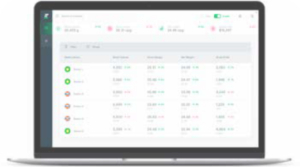Could You Be Leaving Money On The Table?

As a marketer, you know your stations better than anyone. The question is, are you using this knowledge to its full potential?
EdgePetrol customers have seen a rise in profits, but often this profit comes from decisions that could have been made without us. For me, the best thing about our software is it prompts decision making rather than making decisions.
Those decisions still sit with the retailer. And as it turns out, y’all are great at it!
The best example we have is weekend pricing. One of our UK customers reduced their weekend price by the equivalent of 9cpg and within 3 months they had a 35% increase in volume. Profit on the weekend was flat, but they saw an uplift midweek of 10% where the new customers were coming and filling up smaller amounts waiting for the price drop at the weekend. With great facilities on site and midweek margins at their usual level, this was a highly profitable strategy for them.
Another example is off-peak pricing. By understanding the margin needed to maintain profitability in off-peak hours, one EdgePetrol user was able to decide whether or not to keep their store open late at night during lockdown. As it turned out, they were making a loss after 8pm, which was solved by a 9 cpg increase in price. Customers understood (there was no drop in volume) and the retailer was able to stay open and serve their local community.
Premium grades are often overlooked sources of fuel profit. As they usually make up a smaller portion of volume, the risk involved in testing their sensitivity is lower. One EdgePetrol retailer managed to increase profits by over 10% across a four week period by testing their sensitivity. They reviewed at the end of that month and once again changed strategy. Next month’s results? Over 23% increase in profits. It’s vital to keep a regular eye on your strategies and make sure they are working.
We find the markets most successful retailers have a strong handle on fuel costs.
There are four methodologies we see used and each has their own benefit:
The most common is replacement cost. Essentially this means costing all the fuel in your tank against today’s price on the basis that you are going to have to replace that fuel anyway. This has some benefits; easy to capture and it allows you to keep a close eye on where the market is heading. However, by not taking into account the cost of deliveries that came yesterday or before, you could be getting a totally different margin than the one you expect.
Last delivery cost means using the cost of your last delivery to price all the fuel currently in your tanks. Whilst this is a bit more work (often keeping track on a spreadsheet) and is usually only possible for smaller estates, it probably makes more sense that the replacement cost option.
Whilst less of an issue than replacement cost, you will still rarely have only one delivery worth of fuel sitting in your tanks. This means you are still not taking into account the oldest fuel sitting there, that you are selling at a potentially higher or lower cost.
FIFO (first-in-first-out) will typically match your accounting practices. It is tracking what fuel comes in and what is leaving, applying the volume leaving to the oldest delivery. It is probably only possible to track at the end of each day through the use of spreadsheets.
This method also leads to big jumps in cost prices and margin as it is what we refer to as ‘stepped’. Therefore, whilst you are able to make sure your margin is as desired, your pole price may be taking sharp, large moves which can be confusing to consumers.
So what is a blended cost?
By applying the cost price to each delivery that lands, the cost prices weight and blend based on the fuel currently in the tanks. When fuel is removed by customers this is removed from the oldest delivery and re-weighted for each transaction. This is something only possible through EdgePetrol.
With blended cost, you get a steady curve of cost prices that allows you to make the pricing decision correctly at the exact right time. Using this methodology has allowed EdgePetrol users to maintain a steady margin and make up to 18% more profit for their stations.
If you’d like to find out more about EdgePetrol, please visit edgepetrol.com or call us on +1 856 441 0894


For more information, contact:
